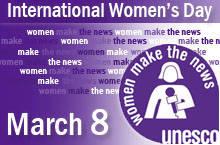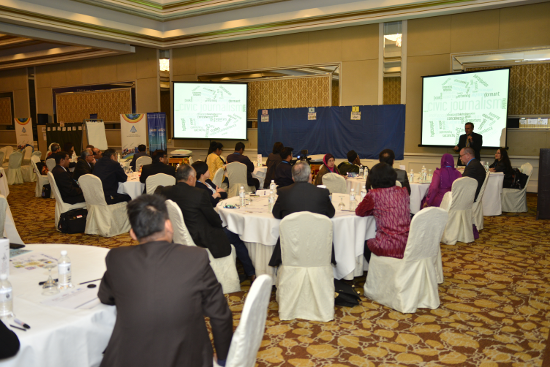Thai Public Broadcasting Service (Thai PBS), together with the Department of Disaster Prevention and Mitigation (DDPM) and the United Nations Office for Disaster Risk Reduction (UNISDR) are launching a video clip competition under the theme “Promoting Investments for Resilient Nations and Communities”.
Thai Public Broadcasting Service (Thai PBS), together with the Department of Disaster Prevention and Mitigation (DDPM) and the United Nations Office for Disaster Risk Reduction (UNISDR) are launching a video clip competition under the theme “Promoting Investments for Resilient Nations and Communities”.
The competition will showcase the benefits of disaster risk reduction policies to nations and communities as well as to encourage increased investments in prevention and mitigation measures.
Video clips can be submitted in the following 4 categories:
Category 1: The best video clip produced by Youth/Student/Young people
Category 2: The best video clip produced by Media/Filmmakers/Professional producers
Category 3: The best video clip produced by NDMOs/NGOs/UN/DRR experts
Category 4: The best video clip produced by the General public/other group/anyone
Video clip submissions should be no less than 2 minutes and should not exceed 5 minutes in duration.
The prize consists of USD 9,000.00 in total, and the final deadline for submission is 31 March 2014.
More details can be found here (click to view) or by visiting the link here.
Video Clip Competition on Disaster Risk Reduction
Thai Public Broadcasting Service (Thai PBS), together with the Department of Disaster Prevention and Mitigation (DDPM) and the United Nations Office for Disaster Risk Reduction (UNISDR) are launching a video clip competition under the theme “Promoting Investments for Resilient Nations and Communities”.
Women Make the News 2014
AIBD as a partner of UNESCO continues to support Women Make the News (WMN) which is a global policy advocacy initiative launched annually aimed at promoting gender equality in the media.
33rd International URTI Grand Prix for Author’s Documentary Arman Trophy
The URTI organizes, with the support of UNESCO and the entirety of the international audiovisual organizations, the first audiovisual International Grand Prix (86 countries represented for the 2013 edition). In television, the International URTI Grand Prix for Author’s Documentary enjoys a great renown thanks to a strong participation and to the quality of the programmes accepted in competition (317 documentaries selected by 237 audiovisual organisations in 2013).
Calls for More Value-Driven Training
AIBD Director Yang Binyuan has strongly urged broadcasters to move away from a business as usual attitude and adapt to the challenges and opportunities posed by social media and the emerging media platforms.
Training Approaches in the New Media Environment
For broadcast training institutions to be attuned and responsive to the demands of new media and social media, they need to form task forces that will facilitate exchange of trainers and experts, offer a more modularized and interactive type of training curriculum relevant to broadcasters’ needs and establish a web-based management protocol or a ‘brokerage’ of sort that facilitates generation of training data and regional exchanges and collaboration.
AIBD Welcomes Delegates to 2nd ICBT
AIBD Director Yang Binyuan welcomes some 70 local and foreign delegates to the 2nd International Conference on Broadcast Training (ICBT) which opened on 24 February 2014 in Kuala Lumpur, Malaysia.
AIBD New Year Party
With the success of 2013 behind us and looking forward to an exciting and prosperous 2014, AIBD staff held their annual get-together in Kuala Lumpur on Friday, 24 January 2014 – an auspicious and a lucky day for prosperity.
Extension of Deadline for AIBD Questionnaire
As part of AIBD’s ongoing efforts to evaluate the performance of the Institute for activities conducted in 2013 and to gain the feedback on the activities for the period of 2014-2015, we are requesting all members and affiliates to fill the member evaluation form and AIBD Questionnaire on Developmental Needs form.
ABU President Visits AIBD
Mr Gil Hwan-Young, President and CEO of Korean Broadcasting System (KBS) who is also the new President of ABU paid a courtesy call to AIBD Secretariat in Kuala Lumpur on 13 January 2014.
New Year and New Look for AIBD Website
As AIBD enters the new year of 2014, it is using the opportunity for a revamp of its website front page, three years after launching the previous version.






